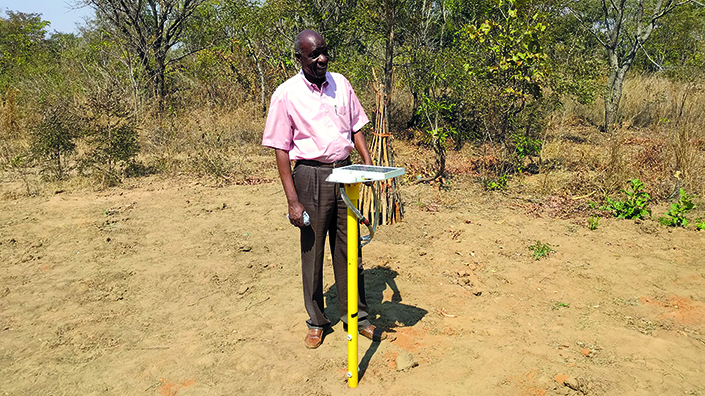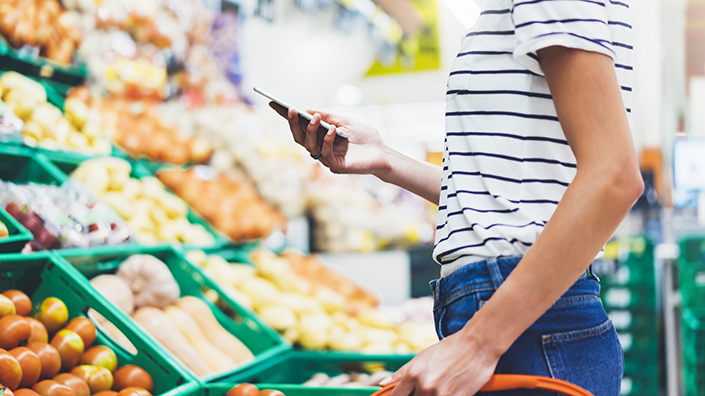From farm to fork, new developments will ensure that there is no more room for guessing when we manage our food supply chain. Instead, exact data promise to make everything more efficient, transparent, safe and healthy.
According to Steve Brewer, research fellow at the University of Lincoln, the latest technology developments will bring a wide range of benefits, from growing crops to processing, transporting, storage, and food manufacture. “We have a range of challenges – health, such as obesity and food poisoning, and criminality, that is making sure that pork is really pork and not horse meat,” says Brewer.
“People also increasingly want to know where their food comes from and whether it has been sourced ethically.”
And there are even grander challenges. Amid the progressing climate change, feeding the growing global population and doing so sustainably is increasingly difficult. Last August, the Centre for Economics and Business Research said the prices of vegetables, meat and dairy products were set to rise in the UK by at least 5% in the coming months owing to the cold winter and the summer heatwave.
In spite of that, 10 megatonnes of food go to waste in the UK every year, says Brewer. The food industry also contributes 17% to the UK’s overall CO2 emissions. Food further impacts the economy through its effect on human lives. About one million cases of food poisoning are reported every year and the cost of obesity to society is estimated to be £47bn annually, says Brewer.
Brewer is coordinator of the recently launched Internet of Food Things Network Plus, which hopes to tackle these challenges by encouraging more innovation. It’s a three-year project that has received £1.14m funding from the Engineering and Physical Sciences Research Council.
Going for growth
The fast development of Internet of Things technology, according to Brewer, enables the generation of large amounts of data that could be mined using cloud computing and artificial intelligence to get insights into the weaknesses and inefficiencies in the food supply chain.
It is starting already on the farm. A project led by the University of Southampton and the University of Aberystwyth is testing pole-sized solar-powered sensors on farms in Zambia and the UK to gather data to better target treatment to improve crop yields.
“These sensors are poles that are stuck into the ground so that they can measure various things that happen in the soil and above it – the temperature of the soil, the amount of water in the soil, things like sunlight and wind speed above the ground,” says Jeremy Frey, professor of physical chemistry at the University of Southampton. “These sensors are distributed throughout the field to collect lots of data about how conditions change within the farm.”

Field-based sensors can help farmers to make informed decisions about how to treat their crops
The autonomous sensors then wirelessly upload the data into the cloud, where it can be analysed and combined with satellite data and information about weather and past events, says Frey.
The farmer would then access a web interface or an app that would provide suggestions to help them to make better decisions about how to treat the farm to maximise the yield. The algorithms would look at scenarios for farms with similar soil type that experienced similar conditions while taking into account expected weather and the type of crop.
“We are trying to bring in modern data science techniques to be able to pull out possible scenarios,” says Frey. “For example, the farmer may choose when best to sow the seeds based on rain forecast or decide when and whether to apply a fertiliser to achieve the best result based on experiences from similar farms in similar situations.”
Tracking food
But the farm is only the beginning. In the future, sensors will be accompanying food items from harvest all the way to the plate. Food manufacturing, according to Brewer, may sound simple compared to, for example, car production, but it involves complex processes, a lot of logistics and intermediate steps before the final product reaches the supermarket shelves.
“For example, supermarket frozen lasagne might seem mundane but it is actually a complex product that has many ingredients that come from many diverse sources with many processes involved,” says Brewer. If a problem, such as listeria contamination, occurs in a complex product such as lasagne or a salad, the manufacturers and authorities have no chance to trace back which component and which supplier might be the source, he says. They know nothing about how the product was stored and whether it was kept in the required conditions.
Tagging food items and collecting information about them as they proceed through the supply chain could therefore be a real game-changer.
“In the future, instead of simple barcodes, we could have radio-frequency identification tags on the packaging that would capture data every step of the process,” says Brewer. “Anyone involved would be able to recall information. Suppliers and distributors would know where things are and what happened to them in the process.”
Smart packaging
But the future Internet of Food Things will aim to go beyond just tracking and monitoring. Sensors and tags will know how the food items were stored and handled, says Brewer. For example, a box of sandwiches could go bad before its sell-by date if the temperature during transport was not kept within a required range. Bottled water left in direct sunlight could suffer as bacteria might take hold.
“You could have sensors in batches of products that would record temperature,” says Brewer. “The Food Standards Agency would have to set up complex regulations that would say how long products can stay at a certain temperature – is it OK for a box of sandwiches to be left out of the fridge for 10 minutes? Or one hour?”
Today, Brewer says, a lot of food is wasted because it reaches its sell-by date. But this date is set by the manufacturers to be “on the safe side”. The food might still be good and safe to eat but legally has to be thrown out. “If you had sensors that could detect whether food was still edible, or had more detailed data about what happened to the food, you could save a lot of money,” says Brewer.

Stock image (Credit: Shutterstock)
Such smart sensors could continue their services once the product reaches the consumer’s fridge. Frey says that smart labels indicating to the consumer when a product is about to reach not its expiry date but the actual stage when it’s no longer good for consumption would help reduce food waste.
“You could start with a label stuck on the product that observes the conditions you kept it in and knows what the food is,” says Frey. “You would scan it and it would tell you that, under the conditions you stored it, you should use this item tomorrow. That would be the first thing.”
The main limitation, according to Brewer, is the availability of Internet of Things technology that would be cheap and unobtrusive enough, yet efficient. Sensor technology needs to be developed that would unlock the full potential of the Internet of Food Things by collecting data and reliably transmitting it to cloud-based programs every step of the way.
A better brew
Engineers are attacking the problem from several fronts. At the University of Nottingham, for example, ultrasonic cloud-connected sensors the size of a finger are making sure beer doesn’t go flat.
According to Nicholas Watson, assistant professor of chemical engineering at the university, who leads the Brewnet project, Internet of Things sensor technology together with data analytics is key for making food and drink manufacturing more efficient.
There are challenges, though, says Watson. While ultrasonic medical imaging devices can cost hundreds of thousands of pounds, ultrasonic sensors that monitor the structure and consistency of food have to be much cheaper and much smaller to be viable in the market.

Stock image (Credit: Shutterstock)
The sensors tested in the Brewnet project send sound waves through the fermenting liquid in the fermentation tank. By measuring how the signal propagates through the beer, the researchers can deduce how far the fermentation process has gone and stop it at exactly the right time for the beer to be the way it’s meant to be.
The sensors also need to be able to transmit data wirelessly so that no complex and expensive computational equipment is needed around the brewing tanks. The analysis of the gathered data is conducted via a cloud-based artificial intelligence app.
Ultrasonic sensors, says Watson, could also be used to monitor product quality: “We have done some stuff on chocolate bars and biscuits. You get things like moisture content, you can see what the components are, and you can do foreign body detection, for example, if something has gotten there that shouldn’t be in there.”
Frey says that technology is needed today to replace the natural wisdom about food that our ancestors had but that modern society, spoilt by constantly available supermarket supplies, has lost. “For example, if you have a food that has gone a little bit squidgy, people might throw it away,” says Frey. “But it still might be perfectly healthy and taste good.”
Content published by Professional Engineering does not necessarily represent the views of the Institution of Mechanical Engineers.